What does it mean to cast everyday life?2 Ioana Nemeș (1979-2011) found a possible answer to combat the slipperiness of its passing: a precise measurement of her everyday life within a meticulously almost surgically devised system of evaluation. In 2005, the Romanian artist began her series entitled Monthly Evaluations based on five parameters: physical, emotional, intellectual, financial, and the luck factor. Each day, she would assign points to these categories on a scale from -10 to +10. In this way, the day is cast in numbers, like a daily self-check-in that always asks the same question: How was your day?
Interestingly enough, Nemeș “stumbled quite accidentally” into art, shortly after an injury ended her promising career as a handball player.3 Given the tenacity and discipline with which she conceived Monthly Evaluations until 2010, it might be easy to draw a connection to high-performance sport, which requires day-to-day reporting on physical condition while training according to a clear structure and following a strict diet and nutrition plan. “I’ve inherited my tempo and organization skills from the sports years,”4 and so she takes her everyday life and condition as artistic material and begins to structure it.
Nearly two decades after the artist began this series, this particular format and approach seems quite familiar. The works presented at Between Bridges in Berlin as part of Nemeș’s solo exhibition “Times Colliding” resonate with the current trend toward diaristic practices, both analog and digital. Life is being orchestrated in every aspect. Companies such as Bullet Journal® promote themselves as “mindfulness practice” and “life-changing experience”, arguing that journaling can be beneficial for self-awareness or stress reduction.5 However, this ultimately leads to the same old neoliberal idea of optimization and improved productivity in the sense of Gweneth Patrow’s “becoming a better version of yourself”. Nemeș follows what seems to be a similar urge here when she tries to document emotions, body awareness, etc., but at the same time she subverts it. It is a visual diary that operates free of exploitative psychopolitics, serving as a record without judgment or need for improvement. It is, after all, a representation of the ephemeral, the intangible of the mundane.
Nemeș translated and visualized the collected data in various media, including diagrams, sculptures, or wall drawings. The exhibition in Berlin focuses in particular on the ephemeral formats and appearances, such as the plots on the windows framing the entrance, those painted directly on the walls in the main room, or the projections on black fabric in the basement. In addition to the factors mentioned above, there are two other important components of Monthly Evaluations: text fragments that the artist has read or overheard in conversations, and the chosen color. This synaesthetic experience holds great imaginative and associative potential, as we begin to imagine how that day unfolded when it was said, “You cannot go back, baby. It’s too late!” or where we might have been on January 31, 2006.
The artist used paints exclusively from the American paint manufacturer Benjamin Moore, which also served as the starting point for the series Untitled (2011) presented in the basement of the exhibition space: Alongside common, or at least mostly easily imaginable, color names such as ‘Nile Blue’, ‘Honeybee’, or ‘Wild Mulberry’, Benjamin Moore employs a much more poetic terminology that plays with the deeply individual emotional quality of colors: ‘Intuition’, ‘Daydream’, ‘Stormy Monday’ or ‘Wish’, certainly conjure up very different colors and feelings. For the series Untitled (2011), Nemeș used this database and created visual poems by sticking the square color samples in a row one under the other. This results in quite unique and sentimental text-color compositions like “hazy skies / You are My Sunshine / marry me”; “unspoken love / i’ve got the blues / Northern Cliffs / abyss” or “Galaxy / Black Horizon / Milkyway / Man on the Moon / Enchanted”. Inner images and worlds emerge, exploring the resonance and associative spaces of language and color.
“Times Colliding” marks a momentum in which different conceptions of time intersect and/or interact in unexpected ways, perhaps even mutually supporting each other. In Nemeș’s practice, the meticulous observation and documentation of external time (which might remind us of Roman Opalka or On Kawara) intertwines with her perception of time, that is, its subjective reality and emotionality. The inner clock certainly ticks differently, sometimes we lose track of time. And so I wonder if Nemeș’s evaluation system might even be a gesture of counteraction. Perhaps it is an attempt to counter the concept of time, to which one submits one’s existence every second and which divides life into past and future with an alternative structure that follows individually set parameters. Thus, Monthly Evaluations certainly captures the daily passage of time, but above all, Nemeș has submitted herself to a logic of her own making beyond the given units of time.
The sculpture Times Colliding (Monthly Evaluations 6.09.2006, 22.09.2007, 12.04.2011) (2011), placed in the main room, allows us to trace another moment of collision. Three days intersect here, intertwining experiences and emotions with each other and making us aware: One day cannot be thought of without considering the experiences of others, and only in the accumulation of days can a life be read. “[Life] escapes the watching eye and the diligently noting hand, and in the end—at the end of a chapter of one’s life, too—has assembled itself behind our backs according to our unspoken needs: More substantial, more significant, more exciting, more meaningful, heavier with stories,” as the writer Christa Wolf aptly puts it, which brings us back to the introductory question.6 The artist’s existence inscribed itself into Monthly Evaluations or rather it gets proven by it. Ultimately, it became an instrument that contributed to self-assurance, but it also made her aware that time “has the power to change a perspective” and “how the same event can be perceived differently in different moments of time.”7 No day is like the other, which is why it sometimes has to be cast.
“Ioana Nemeș: Times Colliding” (Sept 13–Oct 28, 2023), co-curated by Kilobase Bucharest, Fanny Hauser, and Viktor Neumann, at Between Bridges in Berlin, was the artist’s first solo exhibition in a non-commercial art space in Germany. It was followed (and will be followed) by a series of exhibitions (re)introducing and contextualizing different aspects of Nemeș’s practice, such as the show “Ioana Nemeș:Rituals, Keepers and Storms” at Art Encounters Foundation in Timișoara (Nov 15, 2023–Mar 9, 2024), as well as at Kevin Space in Vienna (May 29–Jul 14, 2024) and at the National Museum of Contemporary Art in Bucharest (Oct 29, 2024–Mar 30, 2025).
TITLE Nemeș, I. (2005). ‘I am telling you stories. Trust me.’ Ioananemes.com. Available at: http://www.ioananemes.ro/interviews/stuart-aarsman-i/ (accessed March 25, 2024).
2 “To cast a day” refers to a statement the artist made in an interview with Stuart Arsman in 2005, when she said: “I’m interested in how much you can pin down, in how much you can capture from what is happening every day. In English you have “to cast”, a verb with many nuances that explain better what I want to do,” Ibid.
3 Nemeș, I. (2007) ‘Ioana Nemes’. Interviewed by Esteban Peralta, NeoAztlán.com. Available at: https://neoaztlan.org/2017/01/22/ioana-nemes/ (accessed March 25, 2024).
4 Ibid.
5 See https://bulletjournal.com/blogs/faq (accessed March 25, 2024).
6 Wolf, C. (2007). One Day a Year: 1960–2000. Trans. by Lowell A. Bangerter. New York City: Europa Editions, 13. Wolf’s question of how we can capture life became the starting point for the group exhibition Taking Notes, which I curated at SOPHIE TAPPEINER (Sept 12–Oct 14, 2023).
7 Nemeș, I. (2007) ‘Ioana Nemes’. Interviewed by Esteban Peralta, NeoAztlán.com. Available at: https://neoaztlan.org/2017/01/22/ioana-nemes/ (Accessed March 25, 2024).
POSTED BY
Theresa Roessler
Theresa Roessler is an independent curator and writer currently based in Berlin (DE). Her practice addresses issues around the politics and cultures of memory, and explores the aesthetic strategies an...

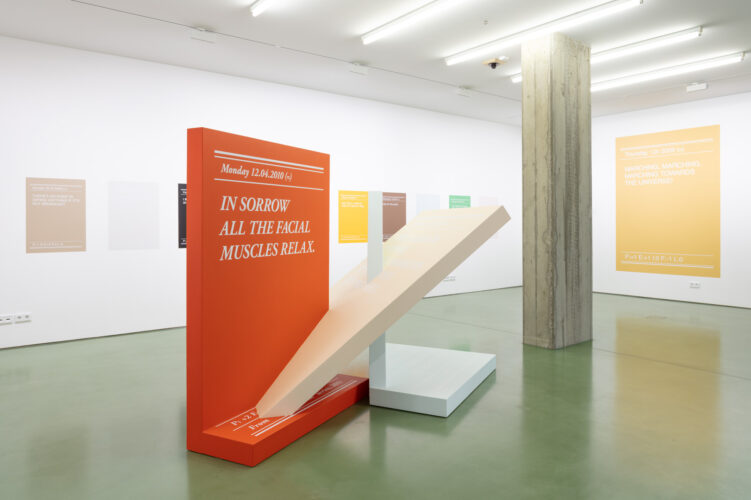
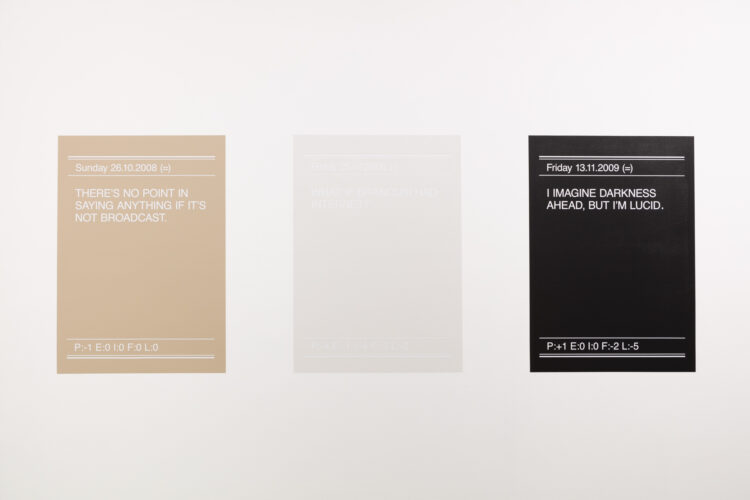
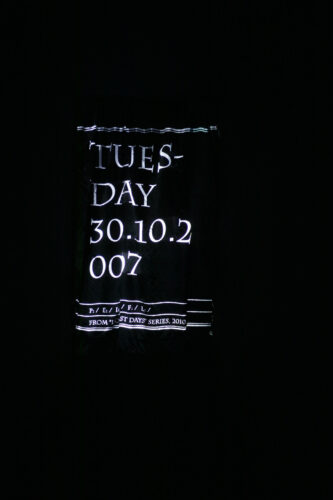
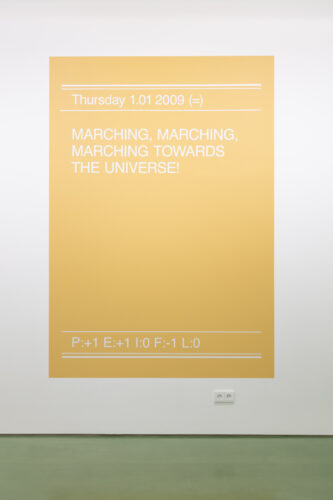
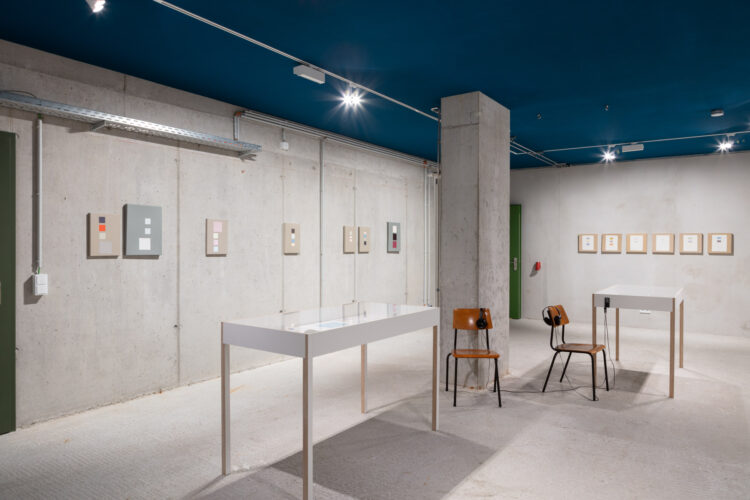

Comments are closed here.